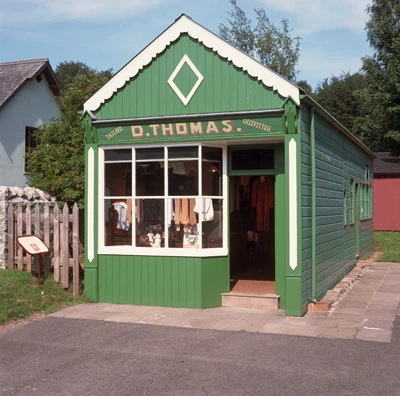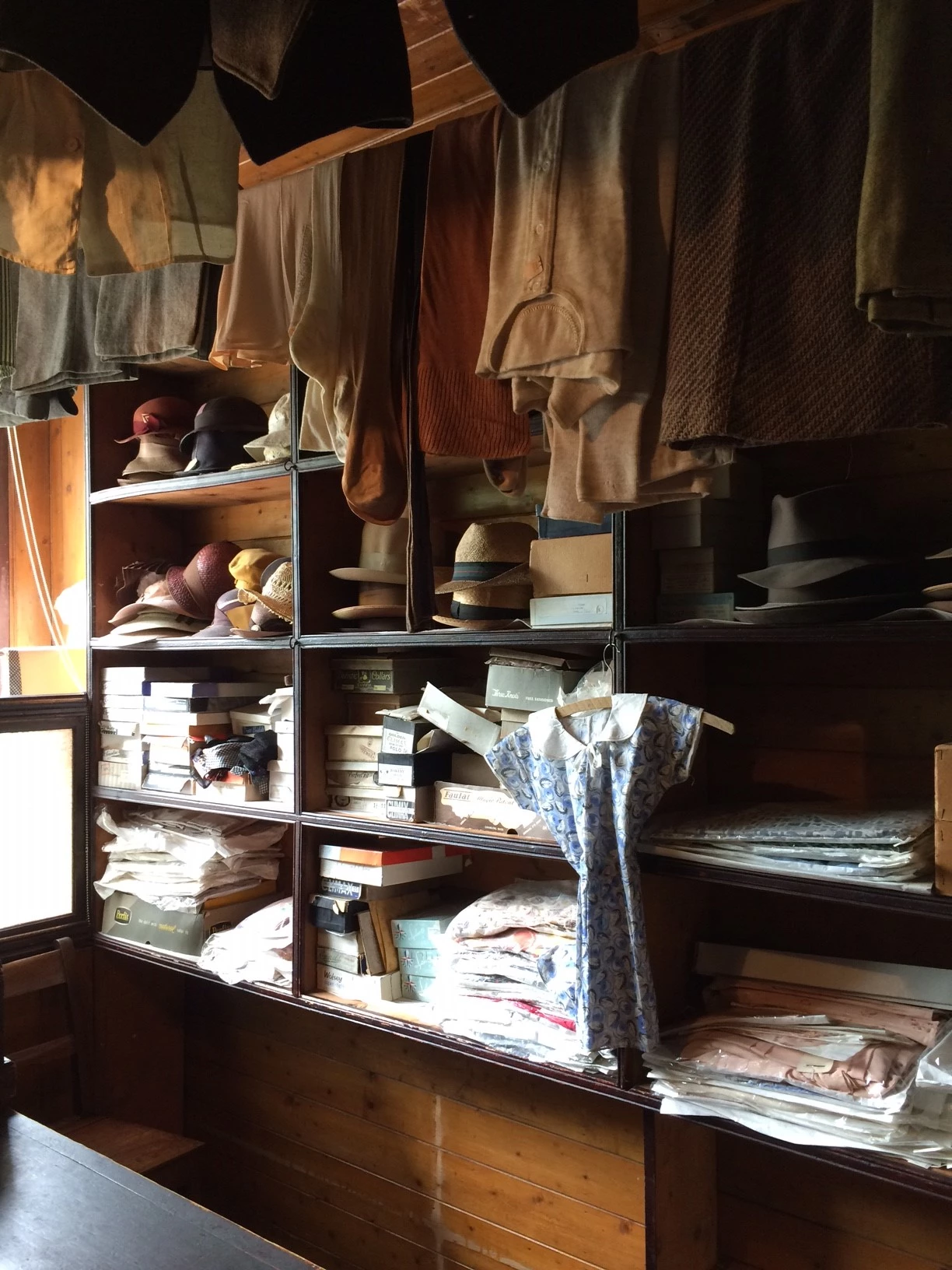The Tailor's Shop and its 'Utility' Stock
, 15 June 2016
Back in June 1941, rationing of clothes and shoes, as well as furnishing materials was introduced. Designers came together to create designs for clothing following the Board of Trade’s strict rules, that made the most of the material, using the least amount of time and labour as possible.
These clothes were mass produced and sent to tailor’s shops across the country, to be bought with coupons. David Thomas’ shop in Cross Inn, near New Quay, was one of these. The shop has since been re-erected at St Fagans National History Museum.
The incredible thing about this shop is that when David Thomas retired, in 1967, he shut up shop and all the unsold stock was left inside. His daughters cared for some of the more delicate fabrics and the rest stayed on the shelves, so that in 1988, when the shop was donated to the Museum, it was like a time capsule. Clothes rationing didn’t end until 1951, so there was still some stock left when the shop closed.
But it wasn’t just these ‘utility’ clothes that were for sale of course. There were also hats, shoes, coats and ready-made dresses for sale in the front of the shop, and a workshop at the back for the craft of tailoring a perfectly fitting suit.
David Thomas opened his shop in the 1920s, converting a feed store. It was usual for tailors to train for 7 years or more, by being an apprentice first and then a journeyman before becoming a fully-fledged tailor on mastering the craft. But it was also possible to attend a school, and after being an apprentice in Bow Street, David Thomas went to London to the Tailor and Cutter’s Academy and got his diploma after learning the skills of stitching, cutting and measuring. The tools he used in his craft are in the workshop at the back of the shop today, along with a few additions of Dan Davies’ tools, another tailor from Rhydlewis.
Cross Inn is a small village, but before mass produced clothes, tailors were an essential part of the village, like the cobbler or the blacksmith. It was hub of the community, and David Thomas would be working cross-legged on the bench in the window, chatting to the customers at the front of the shop. He also liked radios, mending them in his spare time, and the radio would provide the topic of conversation for the day. He would travel out to local farms, after the customers were fitted in the shop, and one of these customers was Miss Jones from the Melin Bompren, the flour mill also now at the Museum.
Our audio-visual archive includes tapes of interviews, such as the one in the clip here which is an interview with Nesta Edwards, David Thomas’ daughter. These tapes help us in the Learning department to create school workshops and events during the holidays. This clip is in Welsh, but see transcript below. So the next time you come to the Museum, pop in to the Tailor’s shop and look for the workshop and the radio, imagine the tailor sat cross-legged on the bench chatting away, and know that the shop is almost just as it was the day he walked out for the last time.
What sort of things did they want, mostly would you think?
Well, aprons were very popular at that time, socks, there was a lot of farm work, and lighter socks, dresses. He did sell ready-made suits as well.
Coats?
Yes, yes. Raincoats.
A lot of things were still in the shop of course, ready-made dresses and children’s clothing?
That’s right. Yes, and hats of all kinds and caps, and spats. Spats is what they wore, people who…
What kind of people still wore spats?
They wore spats, people who worked in the bank and solicitors.
So there were people from the farms and people from the bank?
Well, yes there were all kinds of people, you know, it was like, it was a hub for conservations. My father liked to talk. He worked 9 o’clock in the morning until 9 o’clock at night.
Really?
Yes. Often. And if there was a funeral, he’d work all night.


